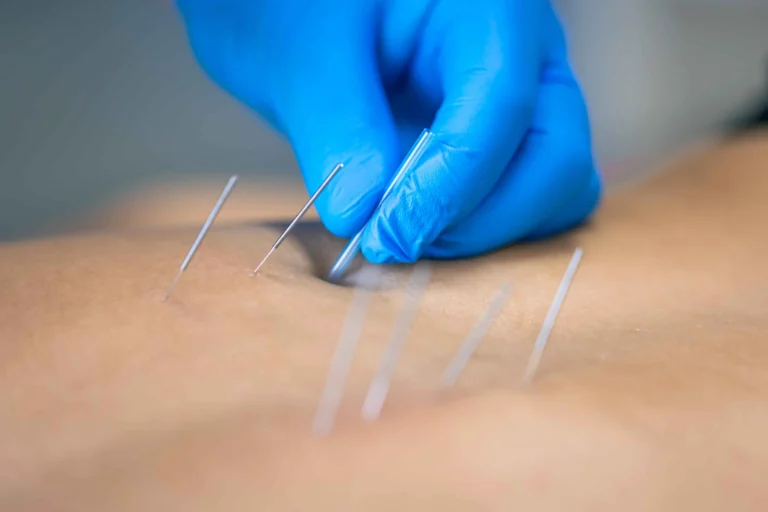What is Dry Needling Physiotherapy?
You probably heard the term dry needling physiotherapy”—maybe while scrolling through social media or from a friend who is going through some physiotherapy sessions. You may wonder how a tiny needle insertion helps in recovering from pain or injury. Many questions naturally arise to you, like how they insert medicine in these small needles, or maybe they are some hollow needles that release pressure from the point. Respecting your curiosity, we provided a clear, concise, and easily understood blog that calms your curiosity and also provides you vital information.

Designed by Freepik
Dry needling physiotherapy is a widely practiced method administered by physiotherapists to treat muscle pain and dysfunction. It is based on modern Western medical principles, which state that affected muscles have trigger points, and targeting them with the dry needle method provides relief and improves the functioning of the muscle.
Understanding Dry Needling ?
Dry needling is a minimally invasive process of inserting, as the name suggests, dry and sterile needles without medication into trigger points – tight bands or knots. These trigger points are the spots of tightness and pain in the muscles that restrict the movement and cause discomfort. These trigger points form due to injury, overuse, or poor posture.
How Dry Needling promotes pain-healing and muscle-healing effects:-
1. Disrupt the triggered points, leading to muscle relaxation and recovery.
2. Promotes the release of hormones that act as natural pain-relieving medicines.
3. Triggered blood flow in the targeted area that promotes tissue recovery and reduces inflammation.
Difference between Acupuncture and Dry Needling ?
Acupuncture is based on traditional Chinese medicine and targets the specific points on the body known as acupoints. These acupoints are present along energy pathways called meridians, and stimulating them helps restore the imbalanced energy of the body. This restoration of energy promotes other benefits like pain management, stress relief, and physical and emotional well-being.
In contrast, dry needling is drawn from Western medical principles; it targets specific trigger points in the area of affected muscles, tendons, and ligaments. This technique is performed alone or complementary with other treatments to improve functioning and accelerate the recovery.
That’s why physiotherapists adopt dry needle therapy as a part of broader treatment to treat musculoskeletal disorder—not to balance the energy flow, but to relieve pain, release muscle tension, and restore mobility.
Conditions treated with Dry Needling physiotherapy : -
- Chronic pain (e.g., neck pain, back pain, shoulder pain).
- Sports injuries (e.g., muscle strain, tendonitis, runner’s knee, tennis elbow).
- Muscle tightness and spasm.
- Tendinitis (causes pain, swelling, and loss of functions in joints).
- Headaches and Migraines.
- Sciatica (causes pain that travels through the lower back down each leg).
- Postural issues of the body and repetitive strain injuries.
We have understood the dry needling technique, how it works, and what conditions can be treated. Now move to the second important part: its benefits, side effects, and conclusion, if one should consider dry needling physiotherapy or not.
Pros: Benefit of Dry Needling
- It is an effective therapeutic technique that reduces muscle tension and pain.
- It improves mobility and enhances muscle function.
- It increases blood flow in the targeted area, which relaxes and heals muscle. As a result, it accelerates the recovery.
- It is a minimally invasive and drug-free technique.
- It helps in lowering the inflammation on tendons.
Cons: Side effects of Dry needling
- Some may find it uncomfortable and painful when targeting the triggered points.
- Some bruising and bleeding may occur at the insertion sites of needles.
- For a while, targeted muscles experience soreness.
Conclusion of Dry Needling Physiotherapy :
Dry needling treatment is an effective method to recover from pain and improve muscle mobility. However, because of certain possible side effects that could seriously disturb health, it might not be suitable for some people. It is advised to go for certified physiotherapists and reputable clinics with a solid track record in physiotherapy modalities, especially in dry needling. They will assess you and your previous health records and then decide whether it is suitable for you or not.